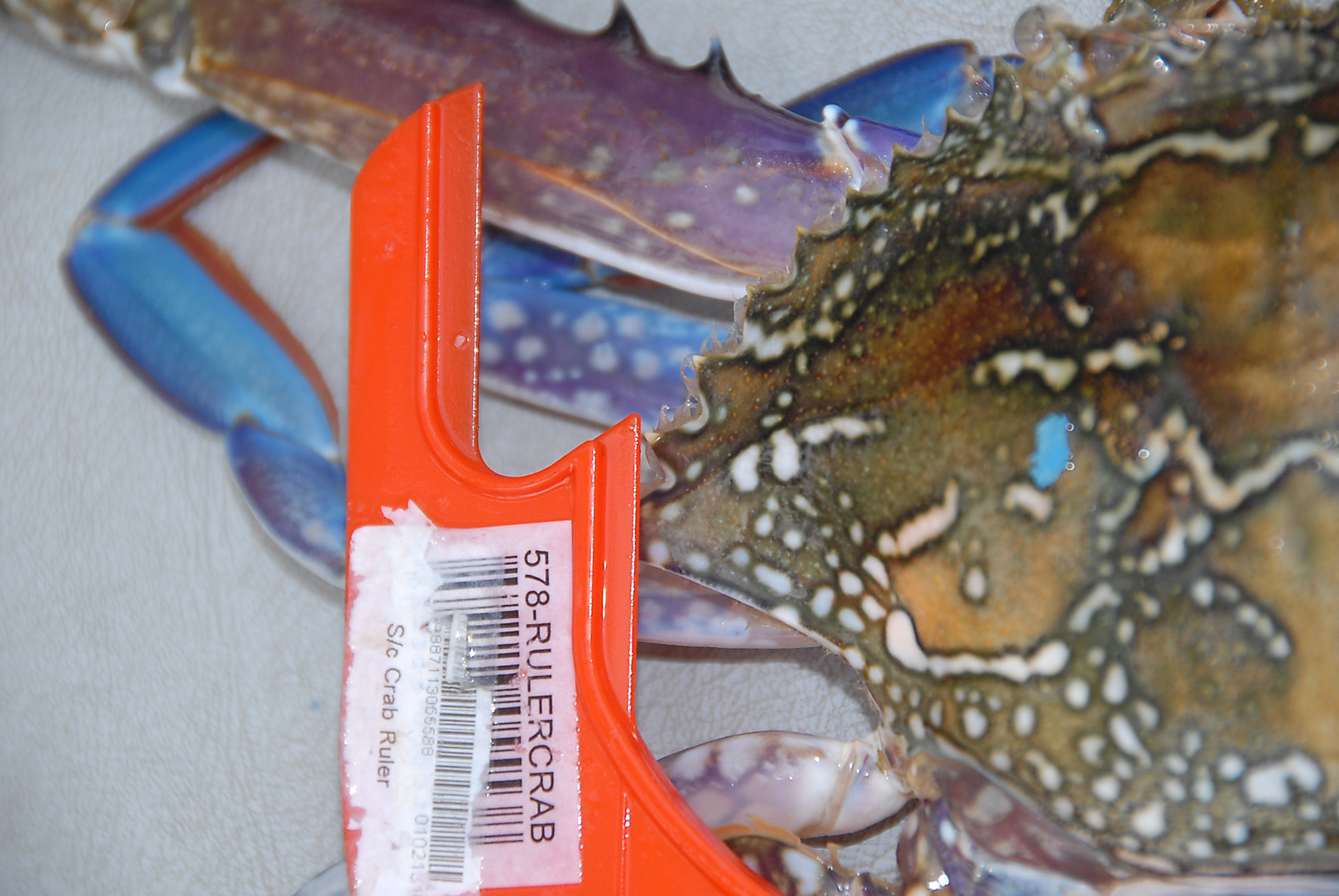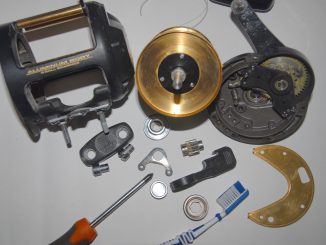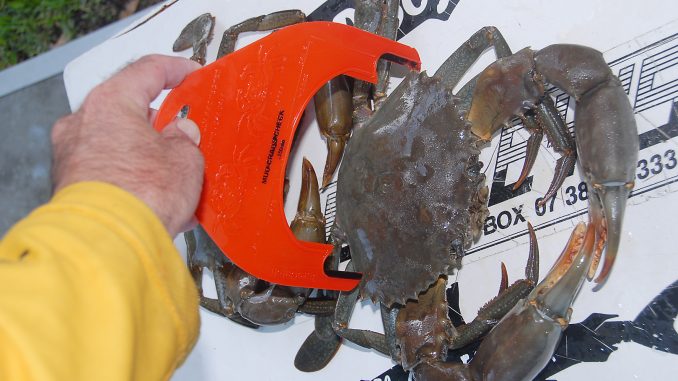
by Gordon Macdonald •
The warmer months are prime times for scoring a feed of crabs throughout Southern Queensland. Many anglers will set crab pots in hope of scoring succulent crabs to add to their seafood feast. Moreton Bay and the mouths of the estuaries offer the chance to secure some quality sand and blue swimmer crabs. Further into the estuaries numbers of large mud crabs can be found. Whilst both can be taken with the same crab pots and pickup dillies they each have different size and bag limits. Having the correct apparatus and approach for each species will obviously heighten results. It is extremely important to have your crabbing apparatus legal and correctly labelled otherwise you are open to receiving stiff fines from fisheries for any breaches.
For targeting sand/blue swimmer and mud crabs, you can use either safety pots or pickup dillies (also called hoop nets). Pickup dillies are designed to sit flat on the sea floor when at rest. The crabs will crawl onto the dilly to feast on the bait secured in the middle. As you tension the rope to lift the dilly, the side lifts higher than the base, (to become kind of like a bowl). As the pot is retrieved, the crabs will be held in the dilly, pinned somewhat by the water pressure as you pull the pot in.
Be aware that the inverted dilly (witches hat) is now illegal in Queensland waters and huge fines exist for their use. It was proven that these were a major threat to marine life, especially turtles, which easily became tangled in the mesh, therefore they were outlawed in April 2010.
The most commonly used crabbing apparatus is the safety pot. This rigid or semi-rigid pot can be round, rectangular or square and usually has two or four cone-shaped entrances into it. The crabs crawl through these entrances (lured by the bait in the pot) and then have difficulty getting back out as the entrances are higher than the floor of the pot. These pots can be set and left a lot longer than dillies as the crabs find it a lot harder to get out.
Each person must not possess more than four crabbing apparatus on a boat on the water. If there are three people on the boat then you can have a dozen crabbing pieces of apparatus (combination of pots and dillies) on the boat. However, if there is only one person you may only have four on the boat at any time, whether they are being used or not. Whether you choose a pickup dilly or safety pot, you will need to have it labelled correctly to comply with fisheries regulations. Following is a heads up on the laws for crabbing and the apparatus used and also a few hints that you may find useful.
Having your crab pots labelled correctly and abiding by the relevant size and bag limits makes good sense. Not only are you abiding by the laws to avoid a big fine if caught in breech, you are also protecting the fishery to maintain its viability for years to come. Hopefully you will be able to get a few succulent grabs to grace the table this Christmas.
1 Regulations
All crab pots and dillies must be labelled with the owner’s surname and address. You can buy inexpensive crab pot tags from tackle and bait shops (which commonly come with zippy ties and a waterproof marker) or you can make your own by cutting up an ice-cream container lid or similar and using a waterproof marker to put your details on the tag.
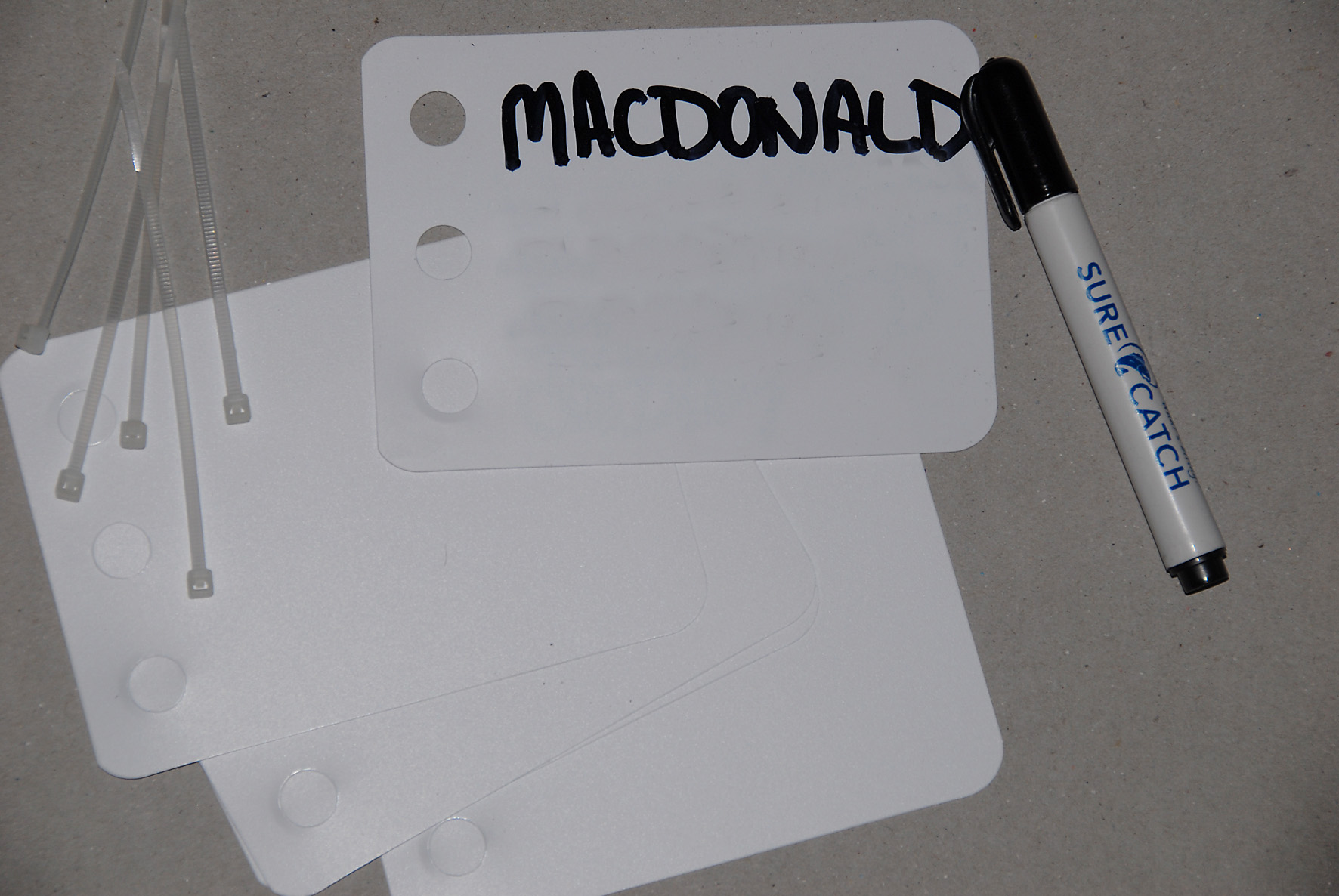
2 Regulations
The tag bearing the owner’s surname and address needs to be placed on the individual pot, preferably attached to the frame. It is wise to place the tag on the inside of the pot to avoid it being rubbed off on the sea floor. Zippy ties offer a secure way to attach the tags and I would suggest using at least two on each tag.
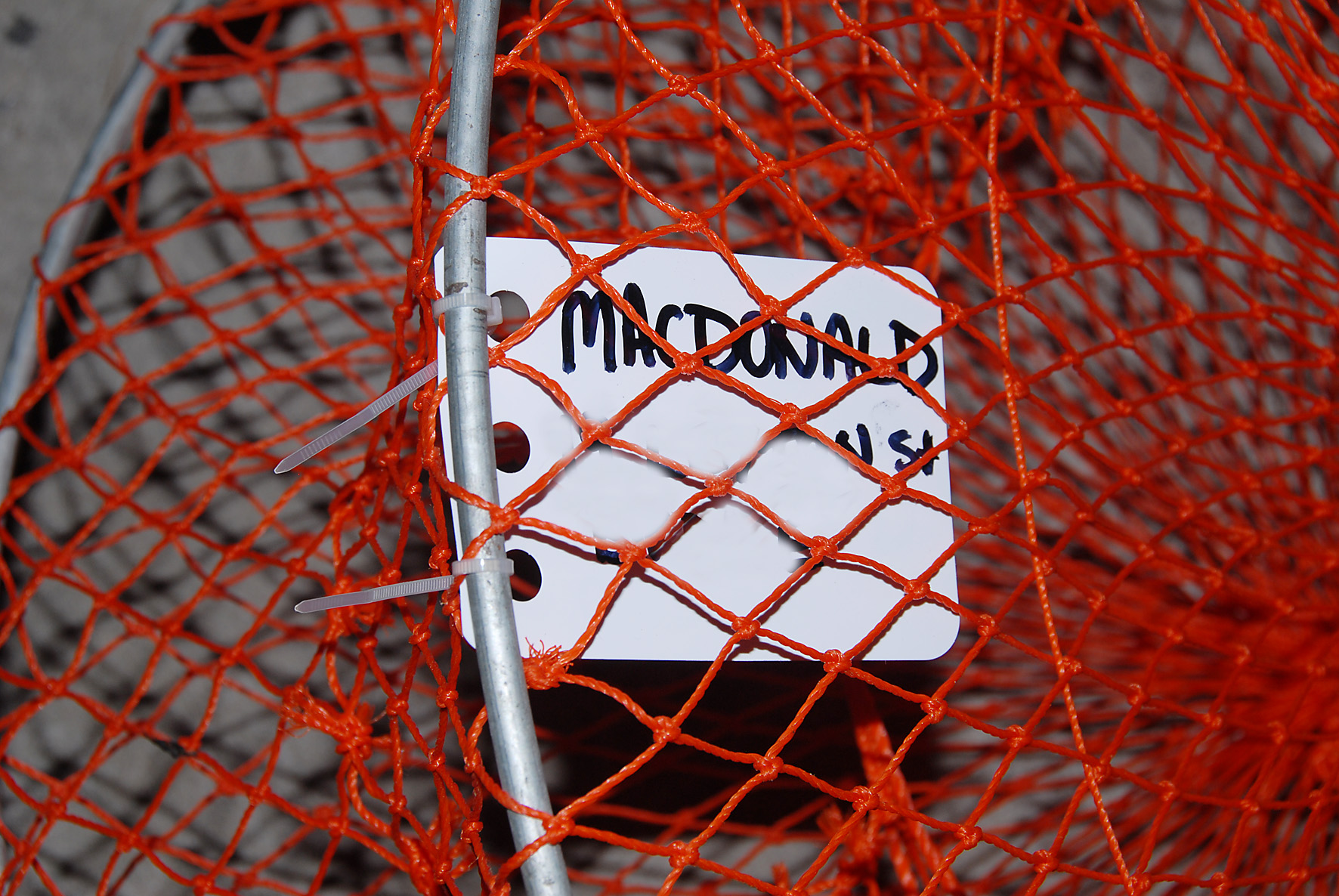
3 Regulations
For pots deployed from a boat, a surface float at least 15cm in all directions must be used. A solid foam ball, easily sourced from tackle and bait stores, is very durable. Fisheries tend to take a dim view of using oil or chemical bottles as these could still have some residue in them. Additionally, hollow bottles such as these are likely to be pierced and sink if accidentally struck by a boat. This could pose a death threat for any marine life that entered the pot or became entangled in the rope. Your surface float must be marked with the owner’s surname, which is easy to do with a waterproof marker.
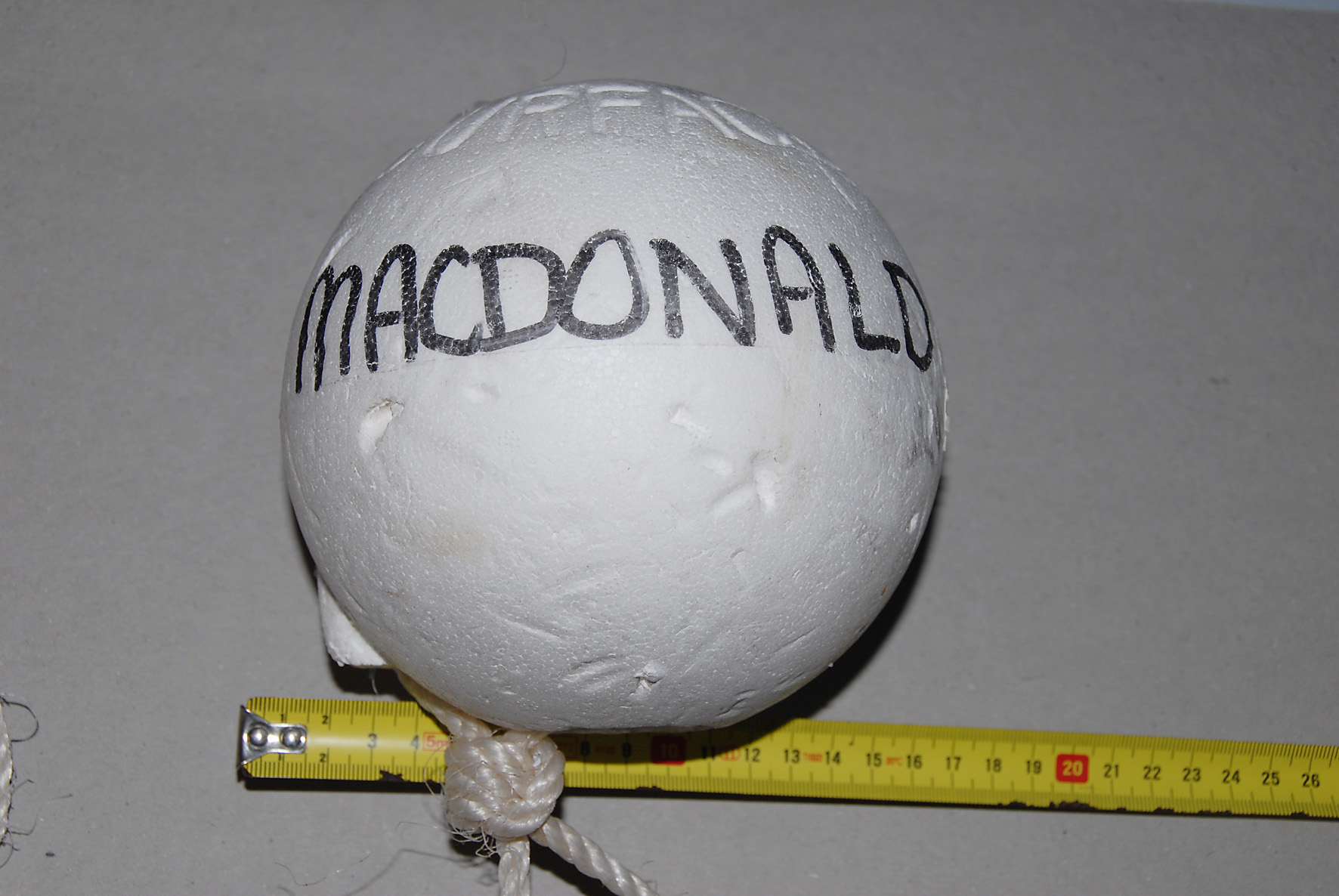
4 Regulations
If setting a pot from the shore, the rope must be secured to a fixed object above the high water mark. A tag bearing the owner’s surname must be affixed to the rope at a position above the high water mark. (Your crab pot must still be marked in the aforementioned way also).
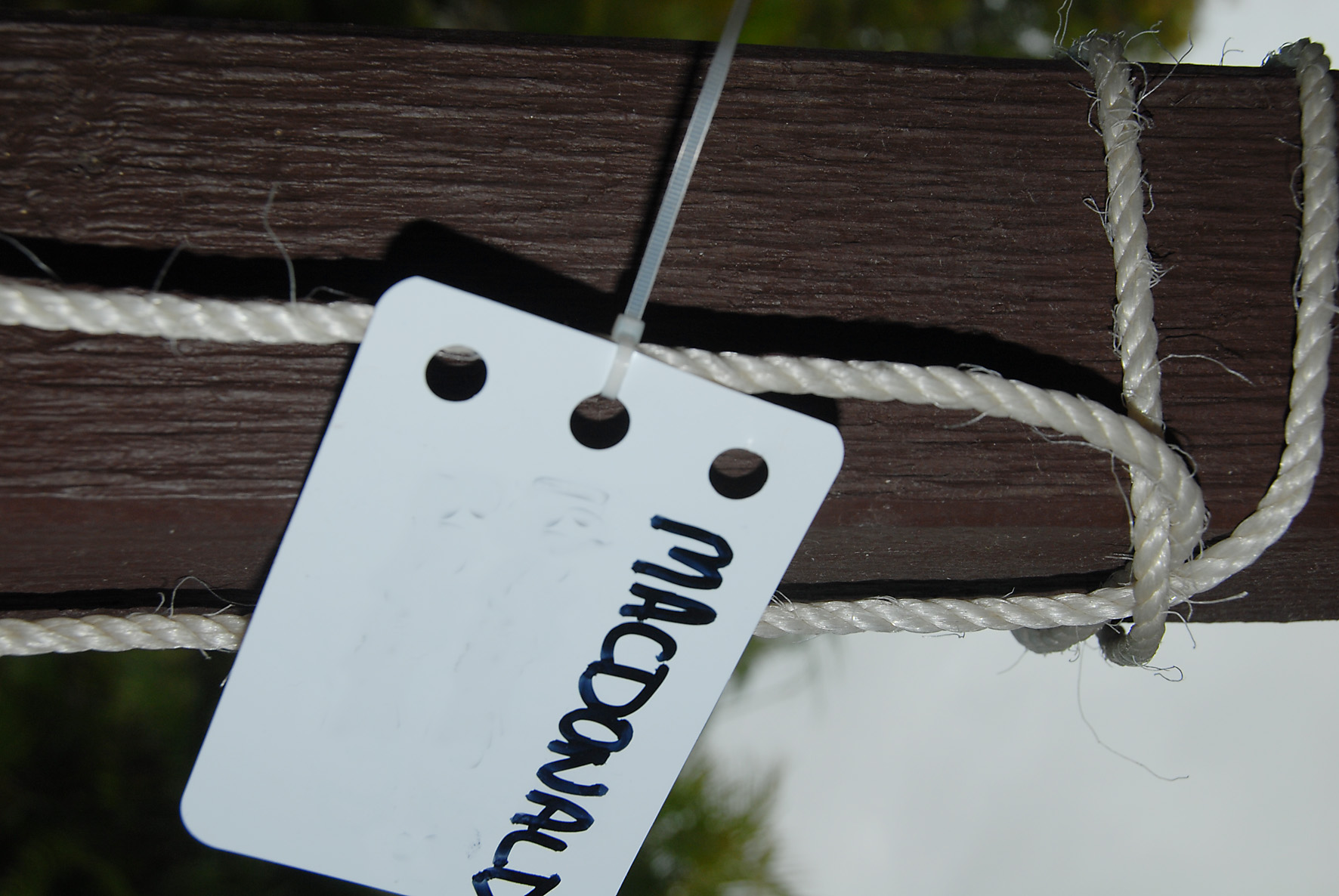
5 Hint
There are several ways to secure the bait into the crab pot easily. A large safety pin style clip (commonly called a crab clip) can be threaded through the bait to attach it to the pot. If setting a pot for a long time (a day or so), a mesh bag can help to slow down the rate at which the crabs consume the bait. Once the bait is gone, the crabs will try and get out the pot. The longer your bait lasts, the better the chance of a good haul.
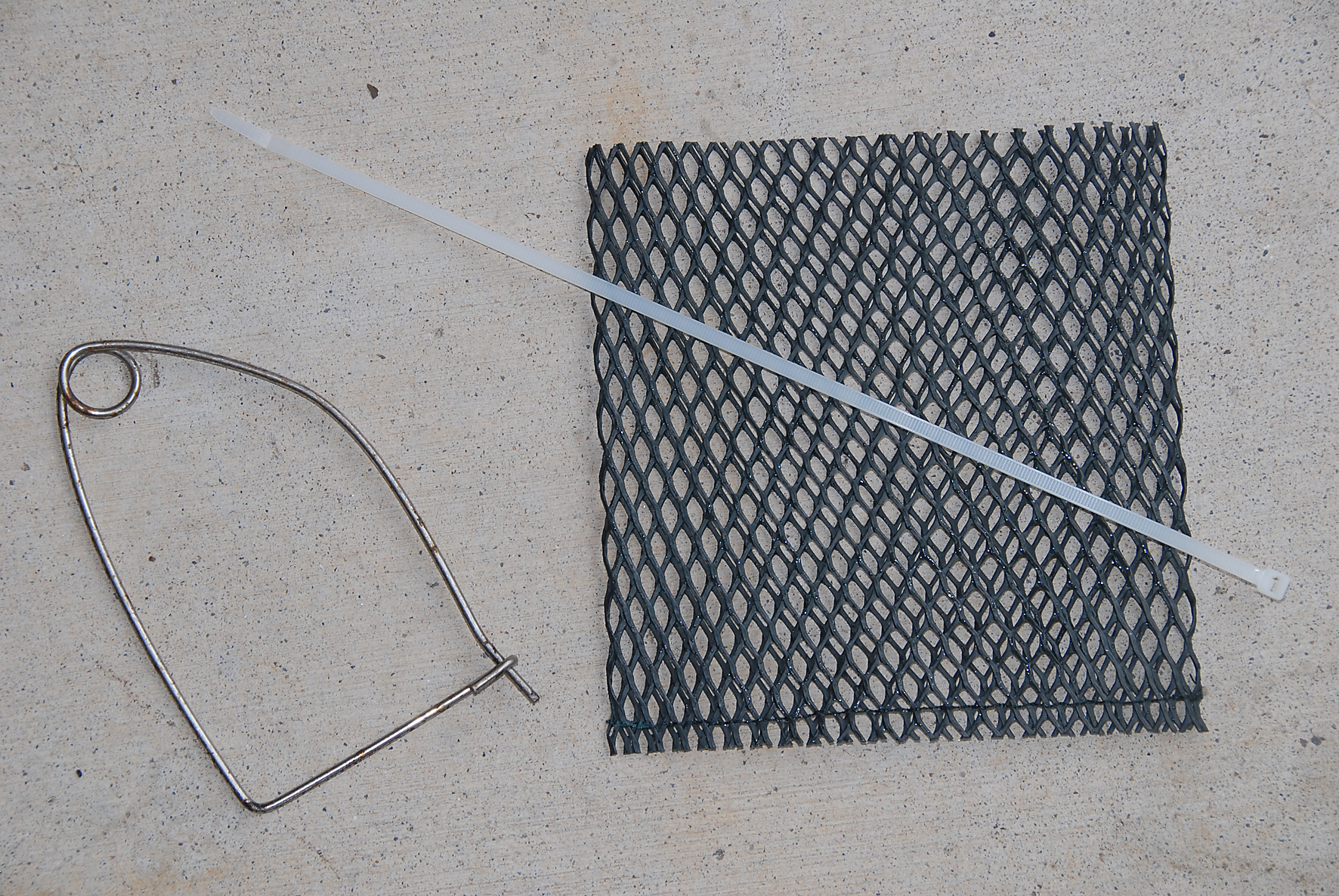
6 Hint
While crab bait envelopes can be purchased, they are easy to make with a little nylon gutter guard and some zippy ties. Fold over a portion of gutter guard with one side longer than the other so you have a flap left at the top, like an envelope. Use a zippy tie with a head larger than the hole in the mesh. Thread the zippy tie up each side to stitch each edge together and then put the head section of another zippy tie on to stop it pulling through. An additional zippy tie can be used to secure the flap closed once you have put the bait in and can also be used to secure the envelope into the pot.
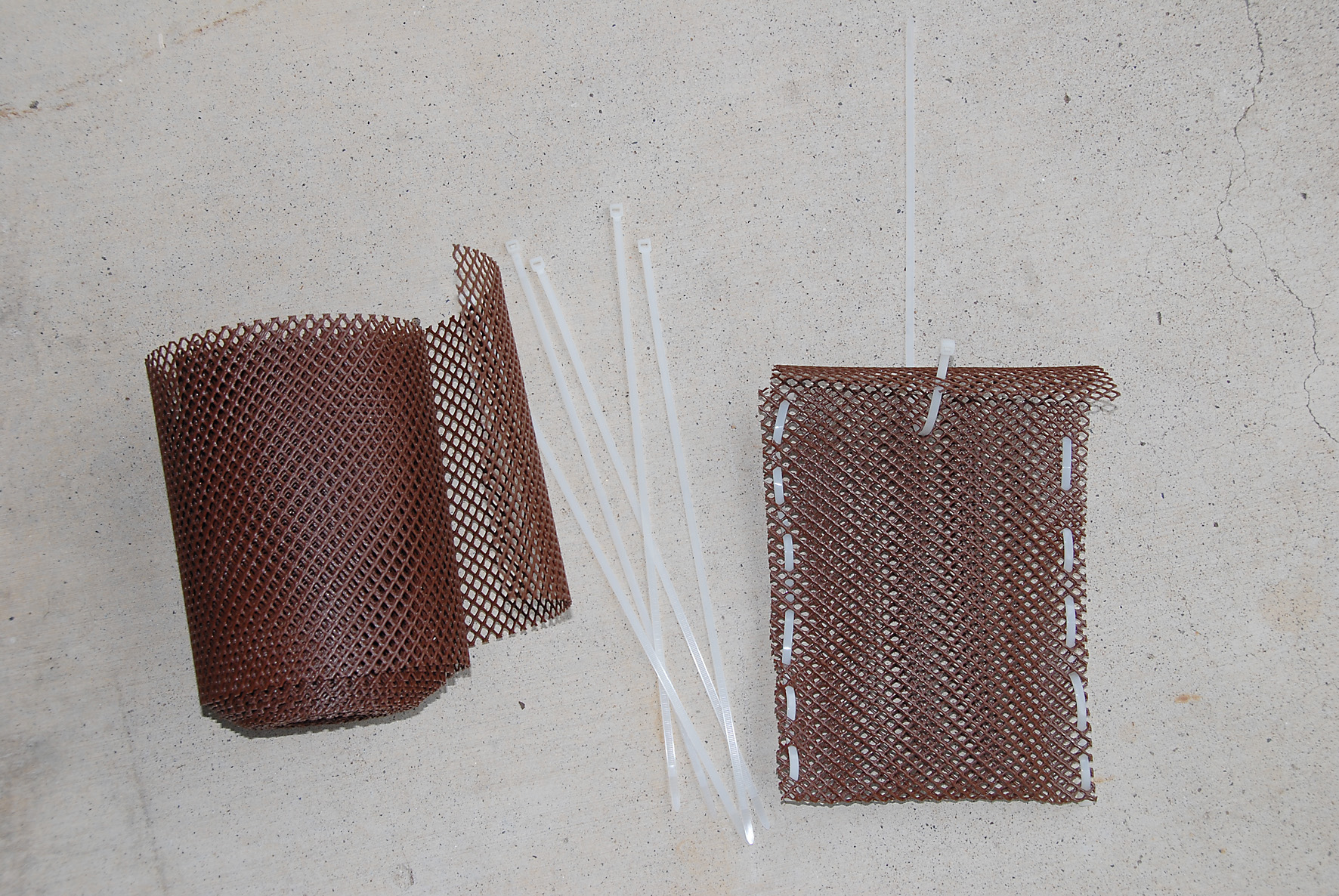
7 Hint
Mesh bags (also called bait envelopes), are great for smaller pieces of bait such as a few pillies, fillet baits, chicken pieces, fish offcuts and fish guts. They can be secured at the top with a crab clip or zippy tie to stop the bait falling out.
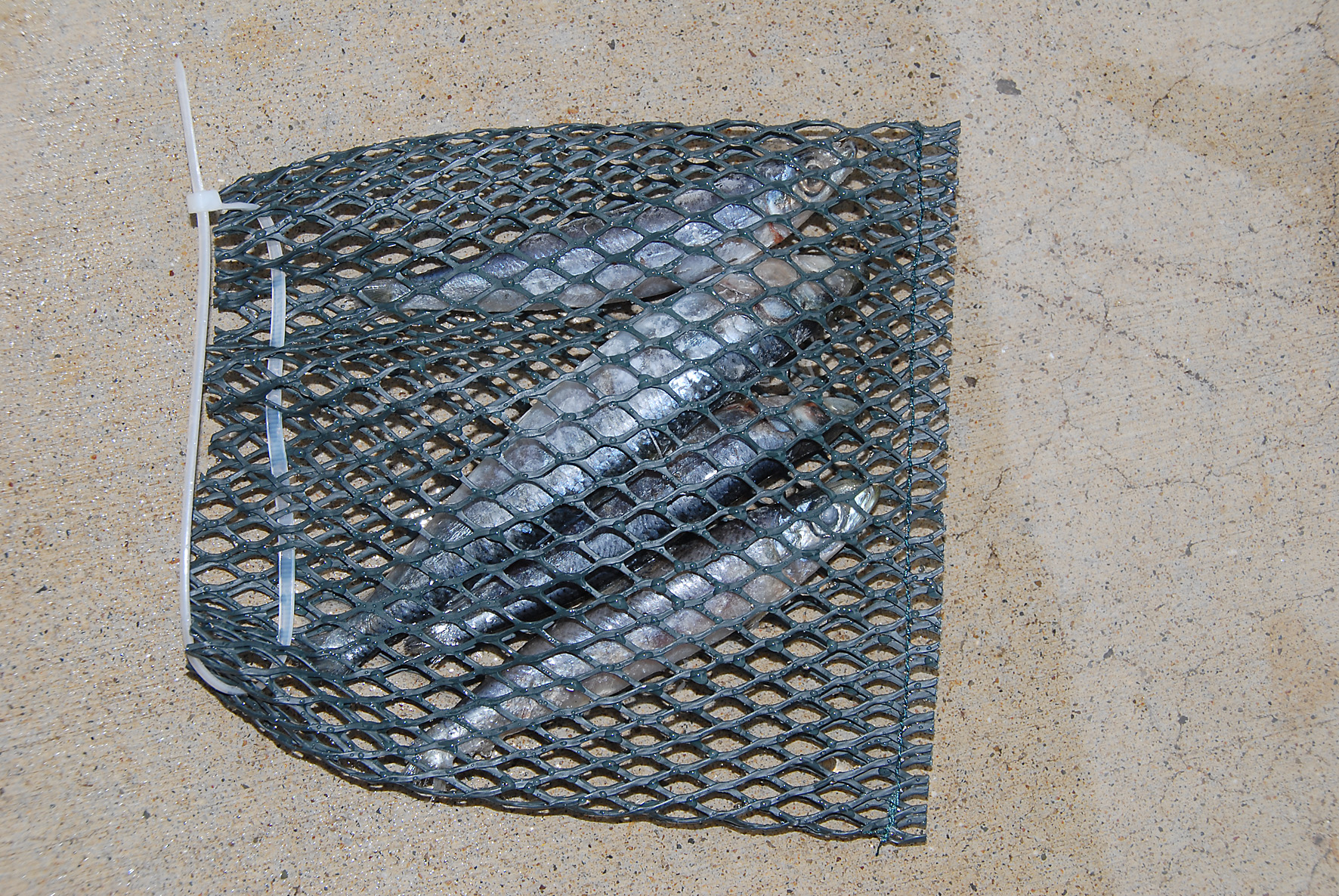
8 Hint
When putting your bait inside the pot, it is best to put it in the middle on the floor of the pot. It can be secured to the mesh with a crab clip, zippy tie or some rope or wire. If the bait was not secured into this position it would be pushed to the edge of the pot and the crabs would simply eat it from outside the pot through the mesh and not enter the pot. It could even be removed from the pot by a crab or fish.
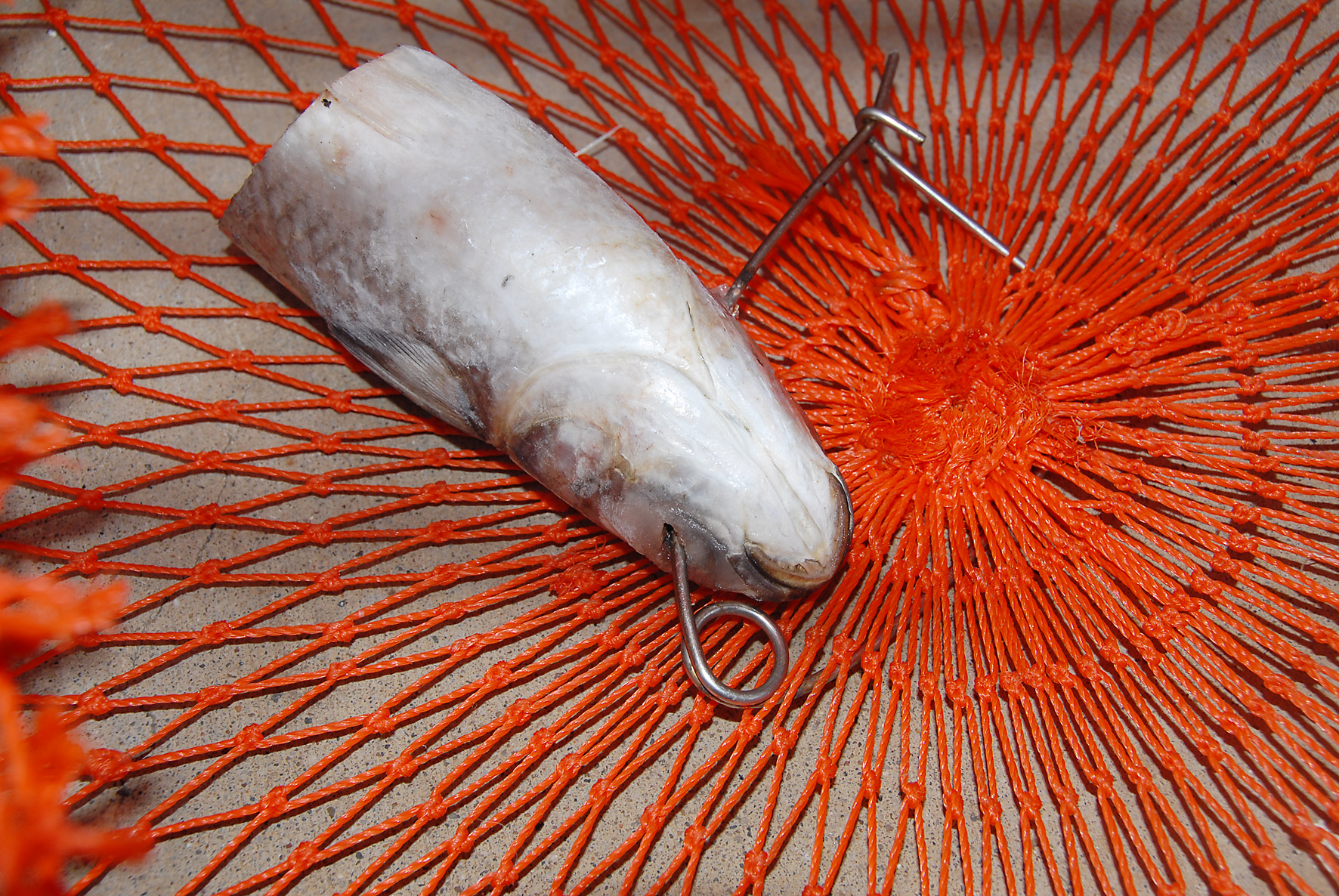
9 Hint
As they are scavengers, there are numerous baits that are ideal for attracting all crab species. Whole mullet are readily used as they are easy to source at most bait suppliers. They are inexpensive and their oily flesh is great for attracting crabs. If you want to cut a large frozen mullet in half then I have found a garden pruning saw is ideal. Chicken carcasses, a few pillies or other baitfish (in a mesh bag), fish frames from your last successful outing, tuna heads or any other flavoursome bait can be used. Even a can of pet food with a few holes in the tin will suffice if you are stuck.
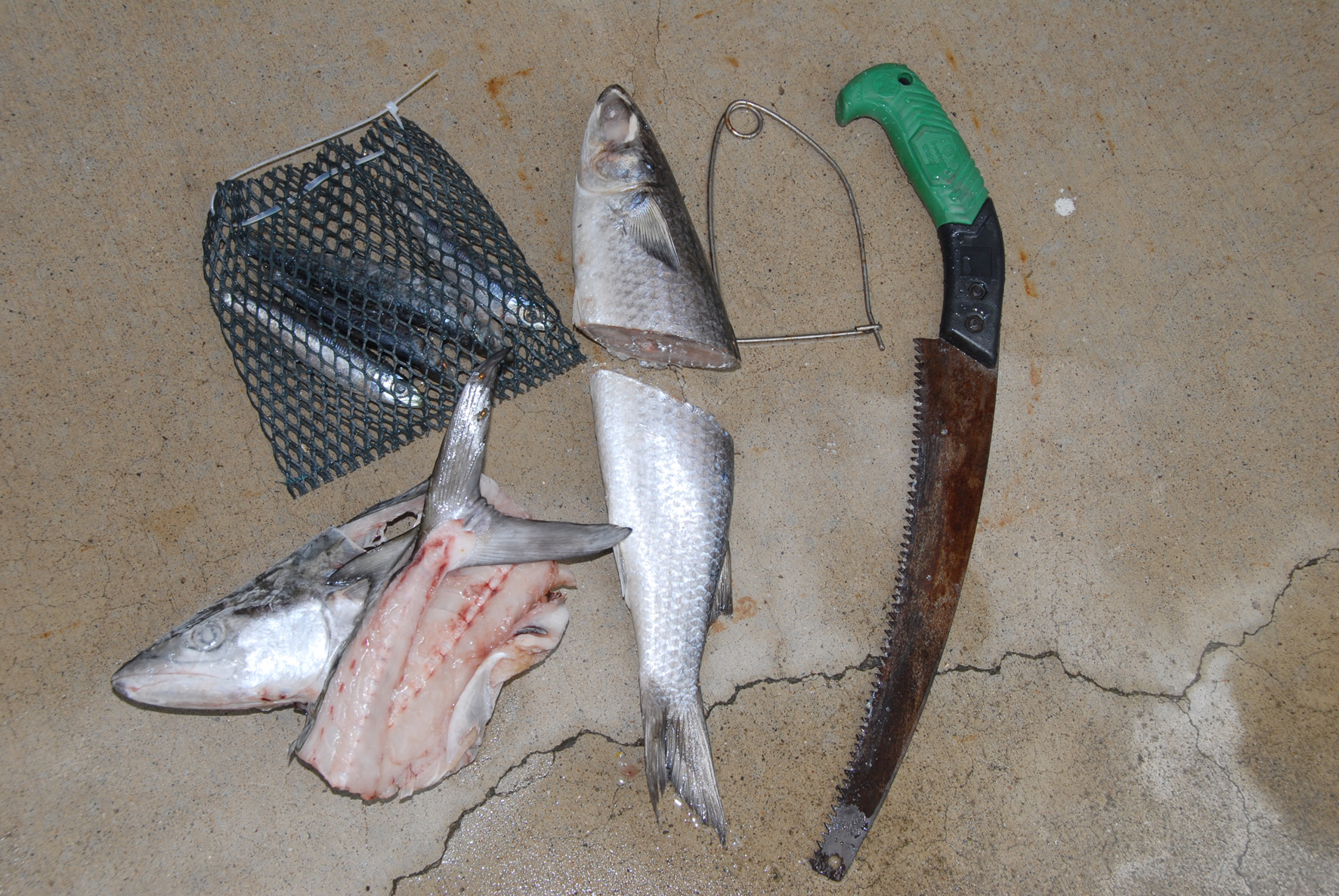
10 Hint
Crab pot ropes can be rather annoying as they tangle easily, making transporting and storing pots a pain. I like to keep my ropes rolled up separately, secured in the middle with a zippy tie. I leave the float attached then on the other end I have a large shark clip. I have numerous ropes and float setup with some longer than others, depending on the depth I am going to set the pots.
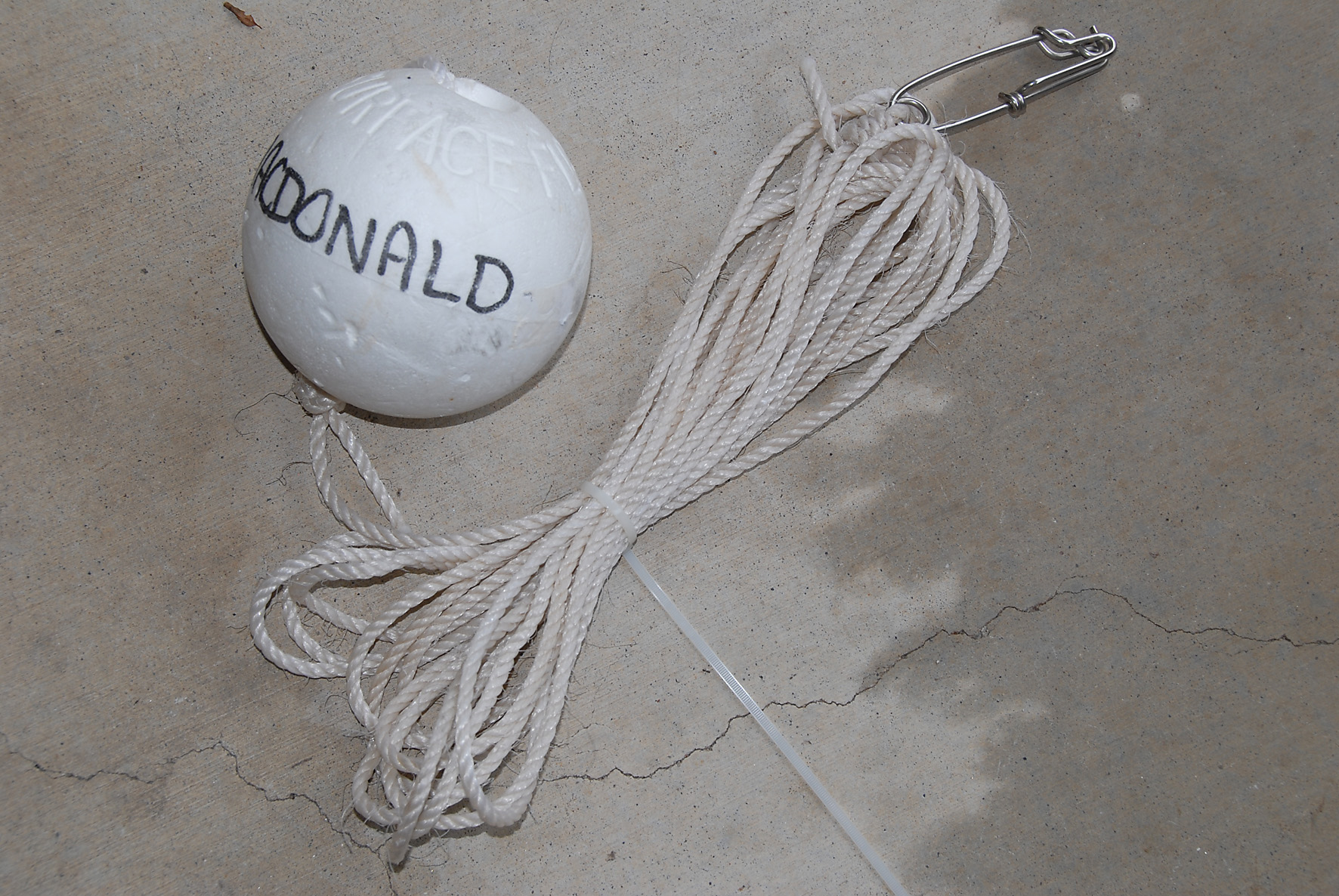
11 Hint
The shark clip can easily and securely be attached to the frame of the crab pot when the pot is just about to be put into the water. When the pot is being taken out of service, the shark clip is unclipped from the pot, the rope rolled up and a zippy tie again used to secure it. Rolling up the rope without it being attached to the pot will also allow any twist to be taken out of the rope so it doesn’t tangle.
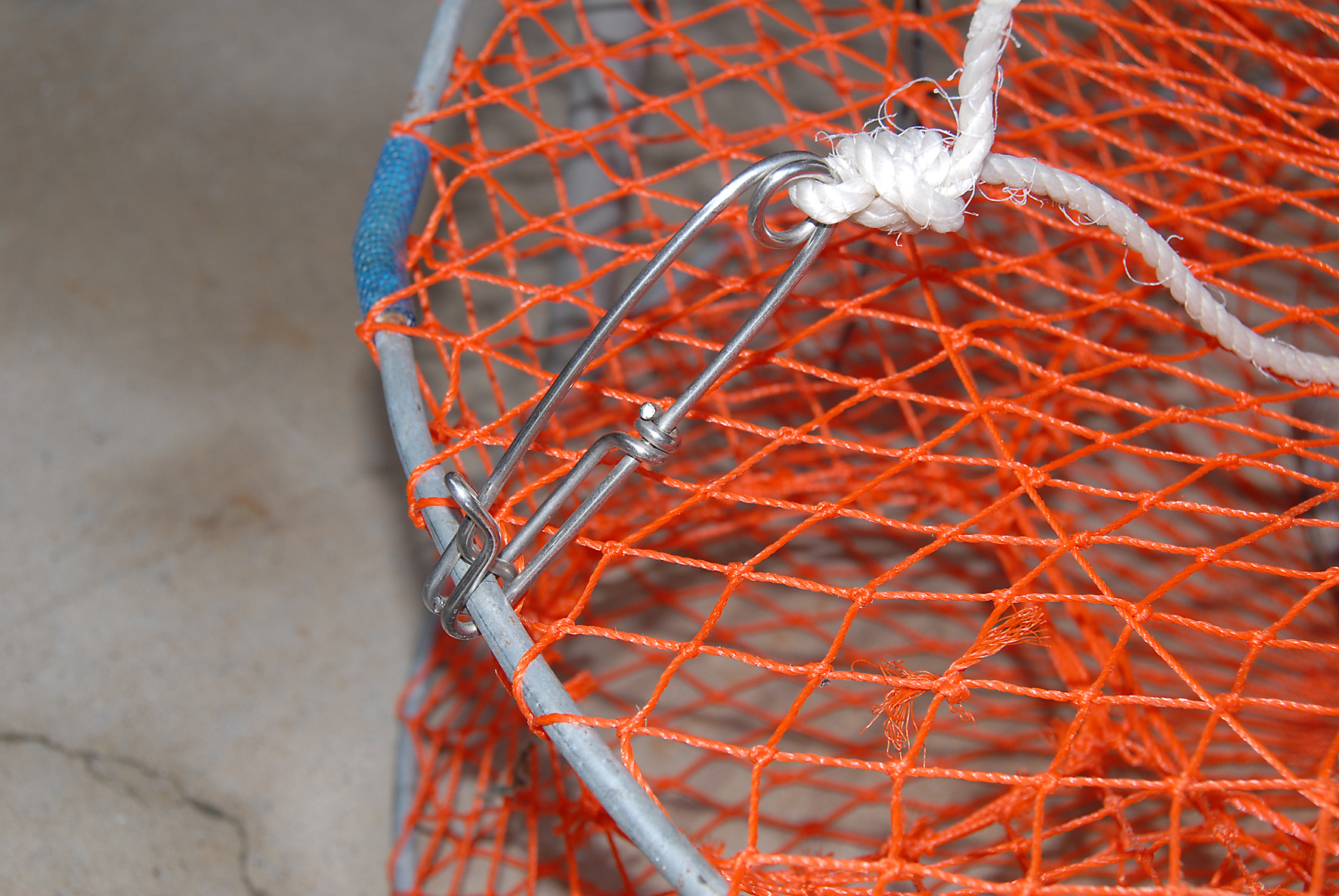
12 Hint
Place your rope and float on top of the erected and baited pot after securing the shark clip to the frame. When ready to deploy, just remove the zippy tie and drop the pot into the water. A neatly coiled rope without twist will rarely ever tangle and uncoils neatly as the pot sinks.
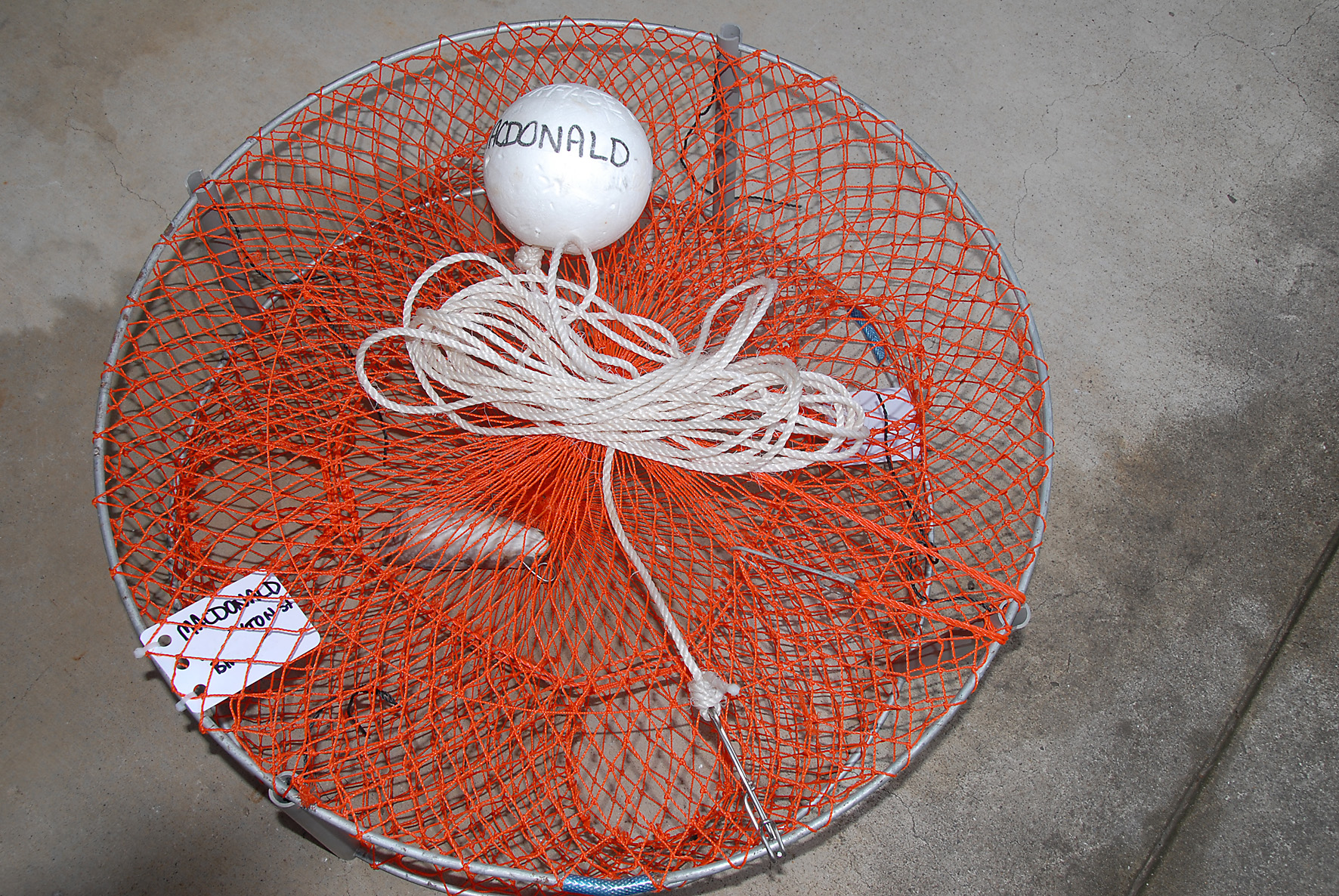
13 Regulations
You will need to measure any crabs, discarding all the females and any bucks which do not make the minimum size limit immediately, so it pays to carry one of these specific measurers. It’s too difficult to measure accurately with a ruler, due to the curvature of the crab’s back. Some quality string is advisable for tying up mud crabs as they can do some serious damage if they grab hold of you. Some also do this for sandies, but most don’t bother as they are far less dangerous.
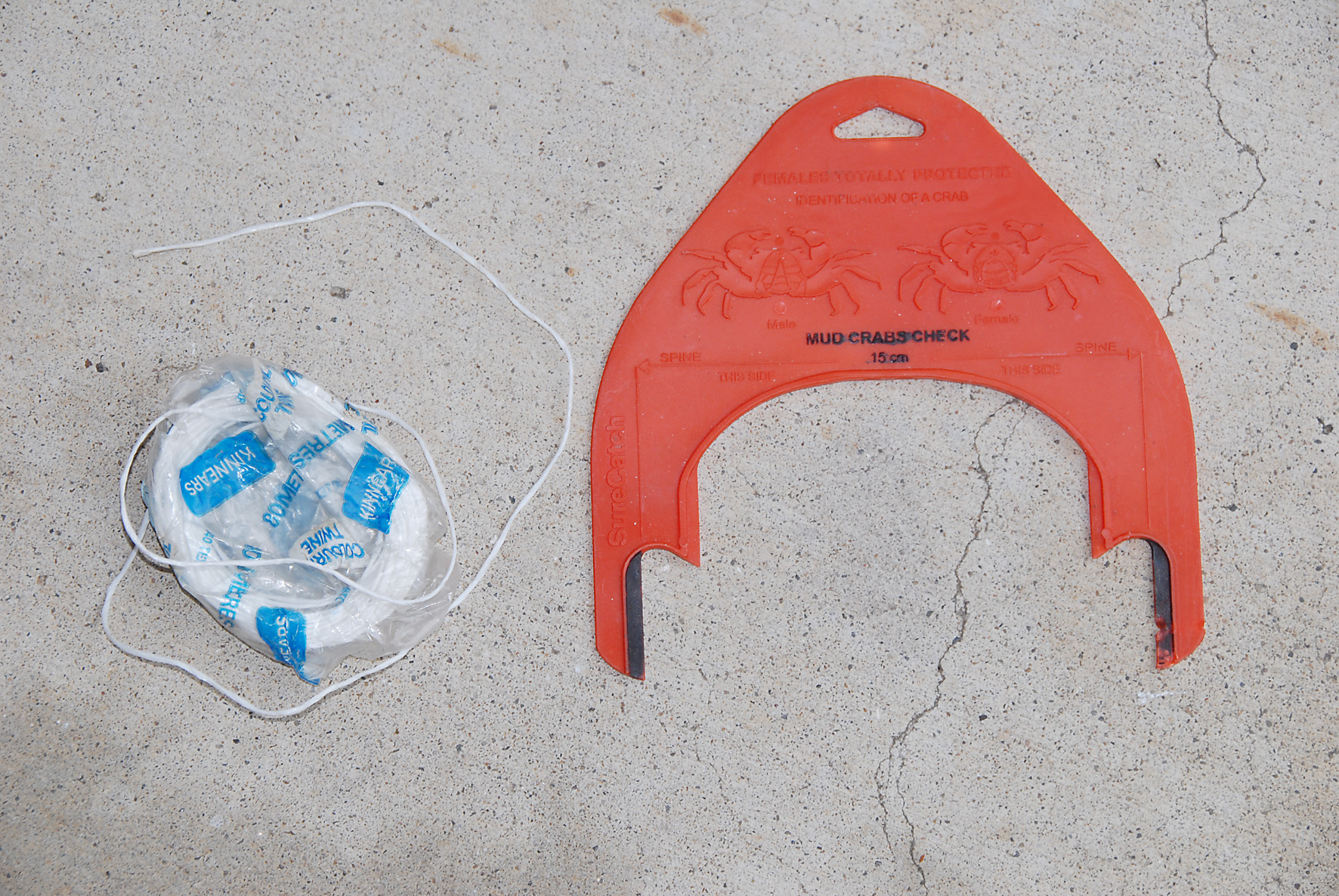
14 Regulations
Do not empty all your crabs into a container to leave the sorting until after you have emptied all the pots as having undersized crabs and females in your possession is illegal. Identify the males and discard the females immediately. Males will have a V-shaped flap on the carapace like this, while females will have a rounded flap.
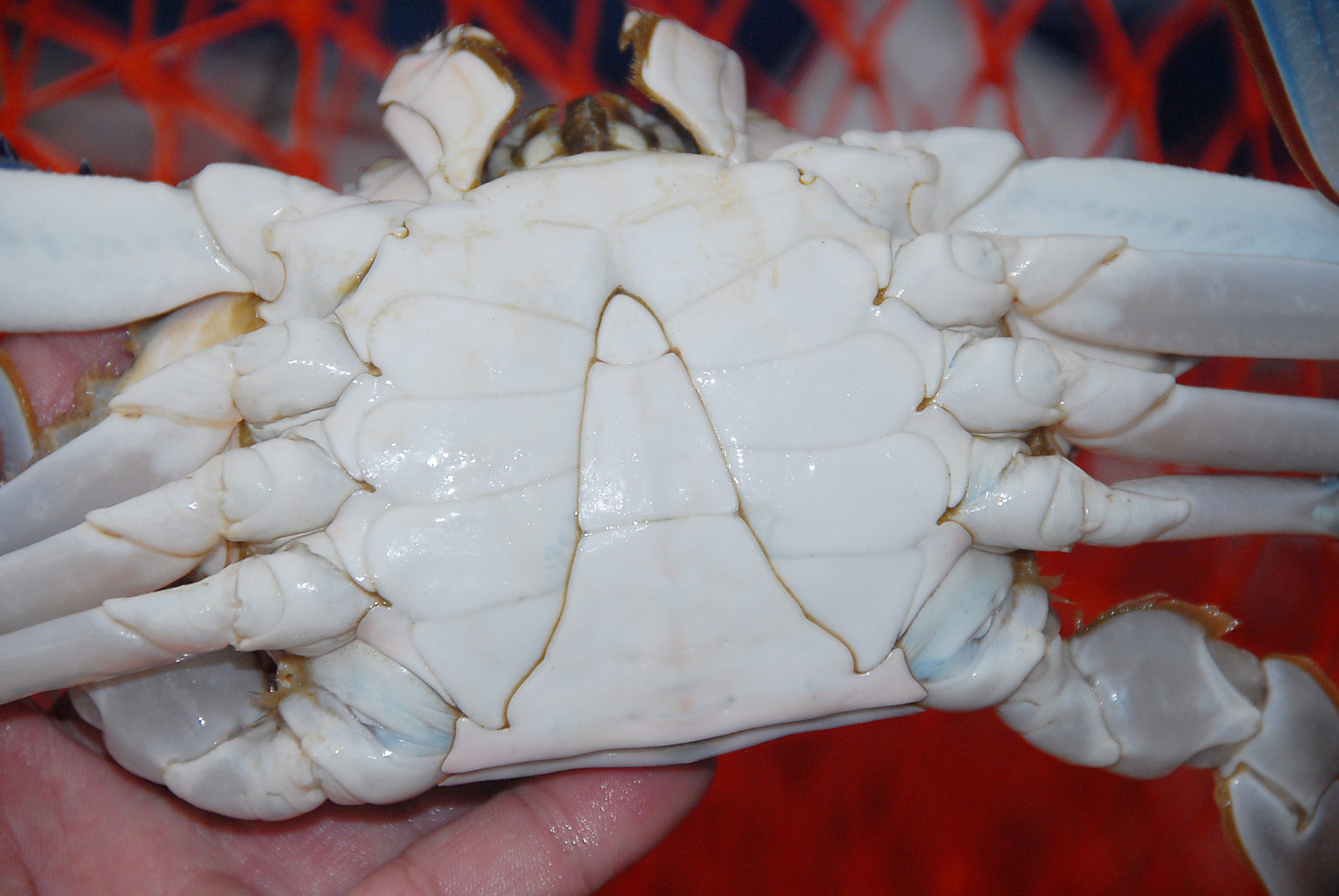
15 Regulations
Mud crabs are measured across the widest section of the carapace (back) and must be at least 15cm and only males to be kept. A bag limit of ten per person is in force in Queensland waters.
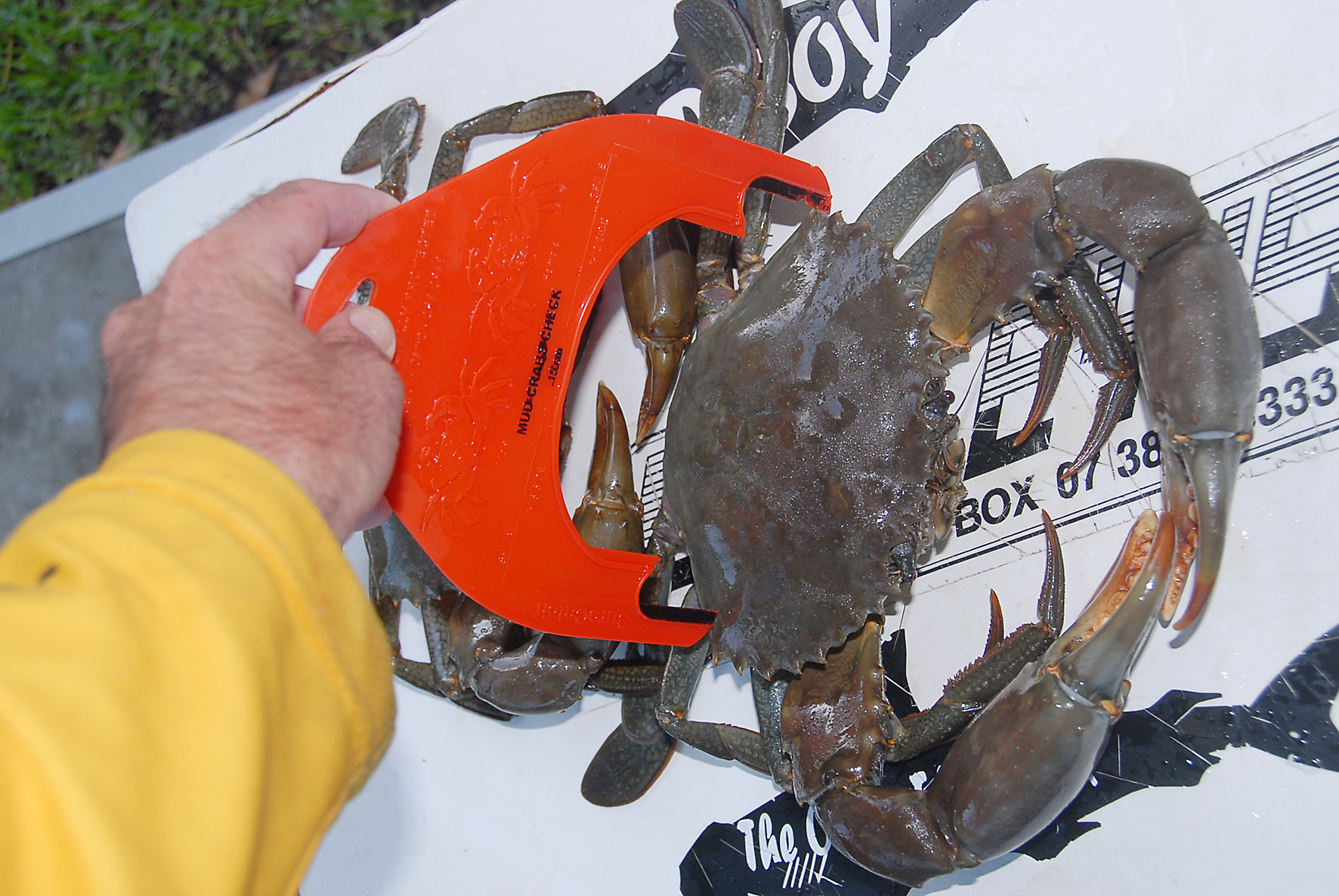
16 Regulations
Sand and blue swimmer crabs are measured from the next point down from the two long spikes that exist on each side of the carapace. They must be at least 11.5cm across between these points and only males are to be kept.
